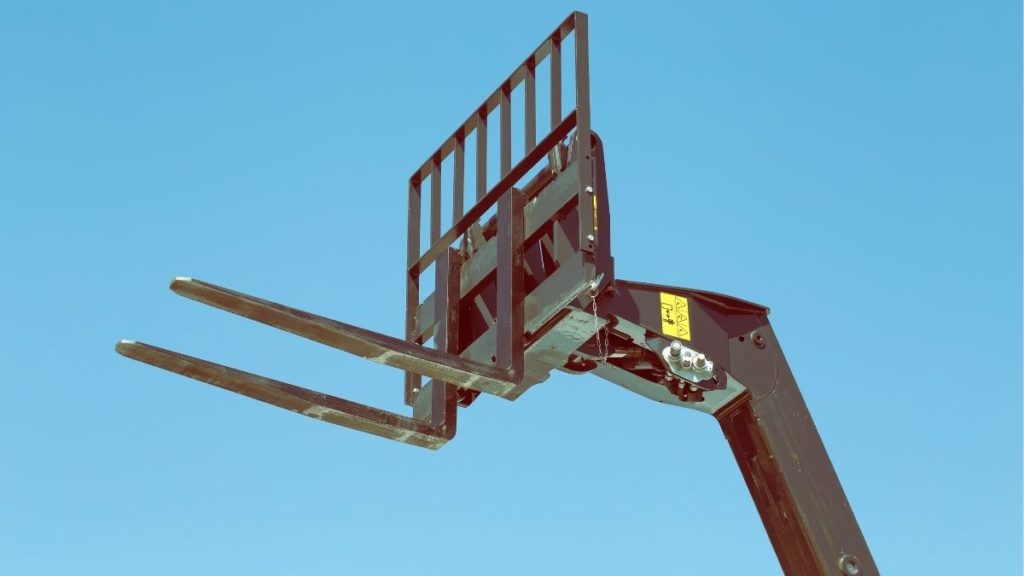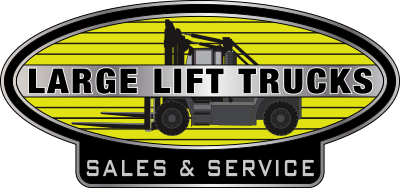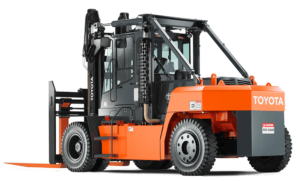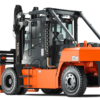Forklift Controls: How to Operate a Forklift?

Forklifts are efficient and effective industrial vehicles that come in really handy in various industrial setups. While operating a forklift has been made to become easy, it is extremely important to train to operate it properly.
And having the right knowledge of its controls is essential for the safe and efficient operating of a forklift. It becomes even more important to keep the safety aspect in mind while working in an industrial setup or a construction site where heavy, and dangerous goods are being dealt with.
Forklifts are used to load/unload and move heavy goods around, and if the operator is not fully aware of its operations, it might cause serious safety issues.
In this article, we will tell you everything about forklift controls and how to safely operate them:
Forklift Controls
Operating a forklift is often compared to driving a car, while these two are not actually the same, there can be certain similarities. Different forklifts also come with different kinds of controls depending on their make and model. So, here’s all you need to know about forklift controls and how to operate them.
Forklift Pedals

Wondering how many pedals does a forklift have?
Well, just like a normal car, forklifts also have three pedals that are used to drive it. They are –
- Accelerator pedals
- Brake pedal
- Clutch pedal
The accelerator pedal is much like the gas pedal in a car and it is used to speed up, and move the forklift forward. The second main pedal of the forklift is a parking brake, which is used to keep it stationary. Much like a hand brake in a car, the parking brake control also must be applied when the forklift is not being operated. The parking brake is also often utilized while the forklift is loading or unloading goods. The third one, the clutch pedal is used to shift the forklift in higher gears to attain more acceleration. This is more common in forklifts with an internal combustion engine and helps in lifting heavy materials.
These are the three most standard pedals that all forklifts have. But there are few other models of forklifts that have some additional pedals such as to perform extra functions specific to that particular model. One such example is the inching pedal. It provides more controlled movement of the forklift in tight spaces by slowing down the forklift by disengaging the lift’s transmission.
This makes it possible for the forklift to work with full engine power to lift. The inching pedal creates precise, and controlled movements perfect for very small spaces and perfect execution. Similarly, some hydrostatic forklifts that operate on forklift batteries are equipped with two accelerator pedals and often have no brakes. All you need to do is release the gas pedal to bring the lift truck to a stop.
Forklift Directional Controls

Forklift’s directional controls allow operators to move it forward and backward, just like tractors and lawnmowers. There are primarily three forklift directional controls – park, drive, and reverse with three positions including forward, neutral, and reverse.
While some forklifts come with directional controls placed at the foot panel, most forklifts have them mounted on the steering column. While the accelerator has already been explained in the Pedals section, the other two directional controls are used to move the forklift for forwarding and backward movement. The operator can alternate on these two operational pedals to move in either direction.
Lifting Mechanisms

The truck’s lifting capacity is the core of the forklift’s functioning. Lifting mechanisms help the forks to move up and down to load or unload goods. Three basic control knobs make up the lifting mechanism in a forklift. While one allows the forks to lift up the goods, the other one is to lower it down to unload the materials.
The third knob allows the forklift to move sideways. Certain variants of a forklift come with a fourth knob that controls the fork’s width. Proper forklift training is required to equip the operator with the in-depth know-how of functioning the three basic controls knobs. To maneuver a forklift by an untrained operator can prove to be a cause for concern.
Forklift pre-operational inspection procedures to follow
Before you start operating your forklift, there are certain pre-operational procedures that you must follow to ensure that the forklift is safely operated and there are no security concerns. While most of these procedures are common across all kinds of forklifts, certain things might differ according to their make and model.
General pre-operational inspections items to check
More often than not, these inspections are well taught to as a part of the forklift training course to enable the operator to operate a forklift safely.
- Oil and water level
- Hydraulic fluid level
- Look for leaks, cracks, and other damages in hydraulic hoses
- Properly functioning hydraulic lift knobs
- Check the mast chains with a stick to see if there are any cracks, leaks, or damages. Never put your hand into the mast
- Check the tires to see if there are any cuts or gouges
- Check the forks
- Loaded backrest extensions
- Finger guards
- Check for any debris or grease in the operational compartment
- Safety belt and other safety devices
While the above-mentioned inspection procedures are the most common ones for forklift safety, additional inspection steps should be followed depending on the model and make.
Pre-operational inspection for electric forklift
- There should not be any broken, exposed or damaged wires
- Battery restrains should be in proper working condition
- The electrolyte levels should be intact. Always wear protective gear while checking this
- The Hood latch should be in a proper condition
Pre-operational inspection steps for internal combustion forklift
- Check the liquid propane tank. Make sure that it is properly mounted and has no cracks or damages
- The pressure relief valve should be pointing upward
- Check all the hoses
- The connectors must be in proper condition
- Tank resistant brackets should be intact
- Check if there are any leaks in the entire mechanism
Pre-operational inspection steps for liquid propane forklift
- Check the engine oil and coolant
- Brake reservoir
- Air filters
- Belts and hoses
- Radiator and hood latch
Certain other measures you must ensure are being extremely careful while mounting the forklift. Wear proper safety gear and shoes to avoid slipping or getting hurt. Make sure you hold the handles instead of the steering wheel while getting up, etc.
After the pre-operational inspection and mounting of the forklift, it’s time for an operational inspection to operate forklift safely. This inspection, which should be done with the engine running, includes checking:
- Accelerator linkage
- Inch controller
- Brakes and steering
- Driving and tilt controls
- Forklift controls Levers
- Forklift controls panels
- Horns, lights, backup alarms, and hour meter
Forklifts are quite helpful machines and have a high-productivity quotient. But, you need to be careful while operating these machines as they can prove to be dangerous if not handled well.
Frequently Asked Questions about Forklift Controls
Does operating a forklift require extensive training?
Yes, ensuring that a forklift operator undergoes proper training before driving a forklift is important. The training course should cover both theoretical understanding and extensive practical demonstrations and training.
How do operators raise and lower the forks while operating a forklift?
For lowering and raising the forks of the forklift, the operator can simply press the buttons placed near the steering wheel. There is one button each for lowering and raising the forks.
Is it possible to tilt the forklift to accommodate different load capacities?
Yes, it is possible to tilt the forklift to accommodate different load capacities. The forklift can be towed forward and backwards to lift heavy weights while maintaining stability. The controls for lifting the forklift are located near the steering wheel.
What safety precautions should be taken while operating a forklift?
Mentioned here are the safety precautions that should be taken while operating a forklift:
- Conduct a thorough pre-operative inspection
- Wear protective gear, including a helmet, gloves, and boots
- Wear a seatbelt while switching on the forklift
- Do not lift more than the forklift load capacity
- Always maintain a safe distance from pedestrians
- Maintain minimum speed in narrow aisles and congested areas
- Use the horn if someone is too close to the forklift
What are some things to keep in mind while conducting a general forklift pre-operational check?
It is very important for an operator to keep these things in mind while conducting a general forklift pre-operational check:
- Appropriate oil and water levels
- Appropriate hydraulic fluid level
- No tire damage like deflation, cracks, or cuts
- Proper functioning and lubricated forklift chains and mast chains
- Smooth functioning of the works
- No dirt or loose parts in the driver’s operational cabin
Should special pre-operational measures be taken for electric forklifts?
No, electric forklifts do not require any special pre-operational measures. Just remember to check that the battery is properly functioning every few days to ensure smooth and efficient operational activity.
What should an operator do if they experience forklift malfunctions while operating it?
If an operator experiences malfunctions while operating the forklift, it is advisable to shut off the forklift immediately and park it in a safe spot. The problem should be reported to a supervisor and technician immediately.
Why is it important to understand forklift controls?
Forklifts are effective and efficient vehicles that prove to be extremely helpful in various industrial setups, making the task of moving goods faster and safer. However, to ensure that every task is completed efficiently and safely, it is important to know all its controls. This will help the operator to move the forklift and work with it more effectively. Not knowing the control can potentially result in loss of goods and causing injury to the workers. These vehicles are used to load and unload heavy and critical goods around in industrial settings, some of which can pose hazardous conditions. If the operator is not fully aware of the controls, it can cause severe safety issues.
What are the main control components that one must be aware of?
A forklift, to a large extent, works like a car and the control panels are also similar to that of any other usual four-wheeler. These include three main pedals, brakes, clutch and accelerator that are used to move the forklift around. Then there is the lifting hand that moves up and down through different control. This mechanical hand is used to load and unload the goods. There is also a mechanism that allows the forklift to move sideways. To be able to manoeuvre the forklift, you must understand these panels and master the skill of operating them properly.
What kind of inspections a forklift operator must do before starting work?
There are several steps that a forklift operator must take and check a number of items before using the vehicle to ensure that there are no untoward incidents happening. One must check all the major components of the forklift like oil and water level, hydraulic water level, any kind of leaks and cracks in hydraulic hoses, hydraulic lift knobs, the mast chains (ensure not to check it with bare hands), tires, forks, loaded backrest extensions, finger guards, debris or grease in the operational compartment, and safety belts and other safety devices.
Is it important to keep the forklift in good working condition?
Every vehicle must be maintained and serviced periodically to ensure that it is in the best working condition. This is even more important for forklifts since they are used in industrial settings where maintaining safety is paramount. This is why most forklift operators follow extensive pre-operational inspection steps to make sure that everything is working properly and there are no safety issues. Although the common pre-operational inspection steps are the same, they might vary a little with different kinds of forklifts.






